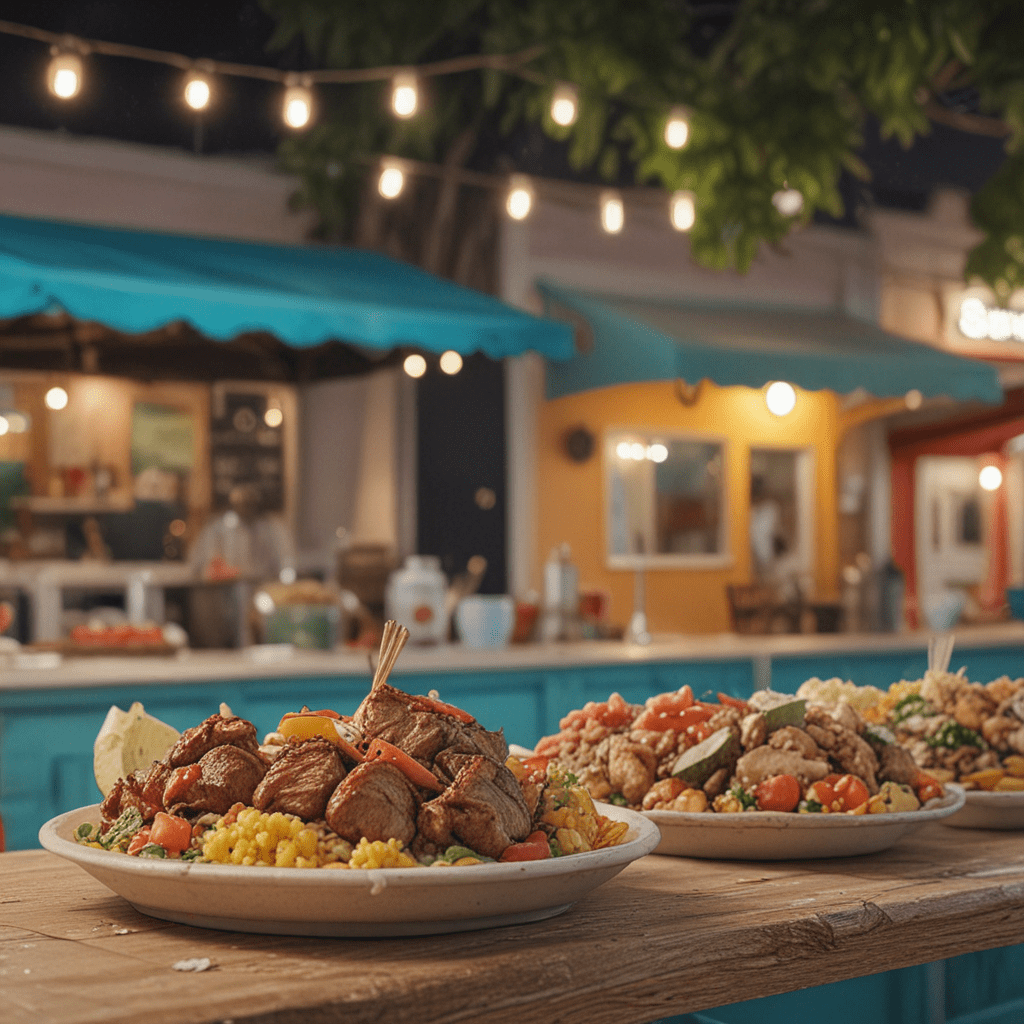Traditional Bahamian Cuisine: A Culinary Journey
Embark on a gastronomic adventure through the vibrant flavors and culinary heritage of the Bahamas. Traditional Bahamian cuisine is a captivating blend of African, Caribbean, and European influences, offering a tantalizing array of dishes that embody the spirit of this sun-kissed archipelago.
1. Historical Influences
The Bahamas' culinary landscape has been shaped by a rich amalgamation of cultures. Indigenous Lucayan traditions, African slave influences, and British colonial legacies have all left their mark on Bahamian cuisine. The arrival of Loyalists and freed slaves from the United States brought Southern American flavors and cooking techniques to the islands. This dynamic interplay of cultures has resulted in a unique and diverse culinary tapestry that continues to evolve today.
2. Staple Ingredients and Flavors
Fresh seafood, vibrant vegetables, and tropical fruits form the cornerstone of Bahamian cuisine. Conch, a large sea snail, holds a special place in Bahamian hearts and palates. Grouper, lobsters, and snapper are other popular seafood choices. Vegetables such as okra, tomatoes, onions, and peppers add color and flavor to Bahamian dishes. Bold spices like nutmeg, thyme, and allspice impart a distinctive warmth to the local cuisine. Lime juice, tomatoes, and vinegar contribute a refreshing tartness that balances the richness of many Bahamian dishes.
3. Signature Dishes: Conch Fritters and Cracked Conch
Conch fritters are a beloved Bahamian appetizer. Fresh conch meat is mixed with flour, onion, bell peppers, and spices, then deep-fried until golden brown. The result is a crispy exterior and a tender, flavorful interior. Cracked conch is another signature dish that showcases the versatility of this Bahamian delicacy. Conch meat is pounded flat, dredged in flour, and pan-fried until crispy. It is typically served with dipping sauces such as tartar sauce or spicy ketchup.
4. Seafood Delights: Lobster, Grouper, and More
The Bahamas is a seafood lover's paradise. Freshly caught lobster, grouper, and snapper are grilled, fried, or steamed to perfection. Lobster is often prepared with a creamy cheese sauce or served grilled with drawn butter. Grouper, a firm and flaky white fish, is frequently pan-fried or baked. Snapper is another popular choice, often prepared with a tangy lemon-herb sauce or blackened with spices.
5. Bahamian Breads and Pastries: Johnnycake and Guava Duff
Bahamian breads and pastries are a delightful fusion of African and European influences. Johnnycake, a staple side dish, is a simple yet flavorful flatbread made from cornmeal and flour. Guava duff, a beloved dessert, features a sweet guava filling wrapped in a delicate pastry dough and steamed to perfection.
6. Soul Food and Comfort Classics: Peas and Rice, Collard Greens
Bahamian cuisine also boasts a range of soul food and comfort classics that reflect its African heritage. Peas and rice, a hearty and flavorful dish, is made with black-eyed peas, rice, and a savory tomato-based sauce. Collard greens, another soul food staple, are cooked with smoked ham hocks or salt pork for a rich and smoky flavor.
7. Tropical Fruits and Desserts: Guava, Mangoes, and Pineapple
The Bahamas is blessed with an abundance of tropical fruits that add a vibrant sweetness to its cuisine. Guava, a popular fruit, is used in a variety of desserts, including guava duff and guava jam. Mangoes, with their juicy and aromatic flesh, are enjoyed fresh or incorporated into desserts and drinks. Pineapple, another tropical delight, adds a refreshing tang to salads, desserts, and cocktails.
8. Rum, the National Spirit: Its Role in Bahamian Cuisine
Rum, the national spirit of the Bahamas, plays a significant role in Bahamian cuisine. It is used to create flavorful marinades for meats and seafood, and it is a key ingredient in the popular Bahamian cocktail, the Goombay Smash. Rum cakes, a delectable dessert, are soaked in a rich rum syrup and offer a sweet and boozy treat.
9. Contemporary Bahamian Cuisine: Modern Interpretations
While traditional Bahamian cuisine remains a cherished part of the islands' culinary heritage, contemporary chefs are embracing modern techniques and international influences to create innovative dishes that showcase the flavors of the Bahamas in a fresh and exciting way. Local chefs are experimenting with fusion cuisine, incorporating elements from other Caribbean and international cuisines to create unique and tantalizing dishes.
10. Culinary Tourism and Food Festivals: Experiencing Bahamian Flavors
Culinary tourism is a thriving industry in the Bahamas, offering visitors the opportunity to immerse themselves in the country's vibrant food culture. Food festivals, such as the Bahamas Food and Cultural Festival, showcase the culinary talents of local chefs and provide a platform for visitors to sample a wide range of Bahamian dishes. These festivals are a celebration of Bahamian heritage and offer a unique opportunity to connect with the local community through food.
FAQ
What are some must-try Bahamian dishes?
Conch fritters, cracked conch, lobster, grouper, peas and rice, johnnycake, and guava duff are all must-try Bahamian dishes.
What is the national drink of the Bahamas?
Rum is the national drink of the Bahamas.
What are some popular Bahamian desserts?
Guava duff, rum cakes, and coconut tarts are popular Bahamian desserts.
Can I find vegetarian and vegan options in Bahamian cuisine?
Vegetarian and vegan options are becoming more widely available in Bahamian cuisine. Many restaurants offer meatless versions of traditional dishes, and there are also dedicated vegetarian and vegan restaurants in the Bahamas.



